Intercropping Boosts Farm Yields 20-50% While Building Resilience

TL;DR: Bacterial concrete embeds living microorganisms that autonomously repair cracks by producing limestone. This revolutionary technology extends infrastructure lifespans by 30-50%, reduces maintenance costs by up to 40%, and could cut global cement demand by 30% over decades.
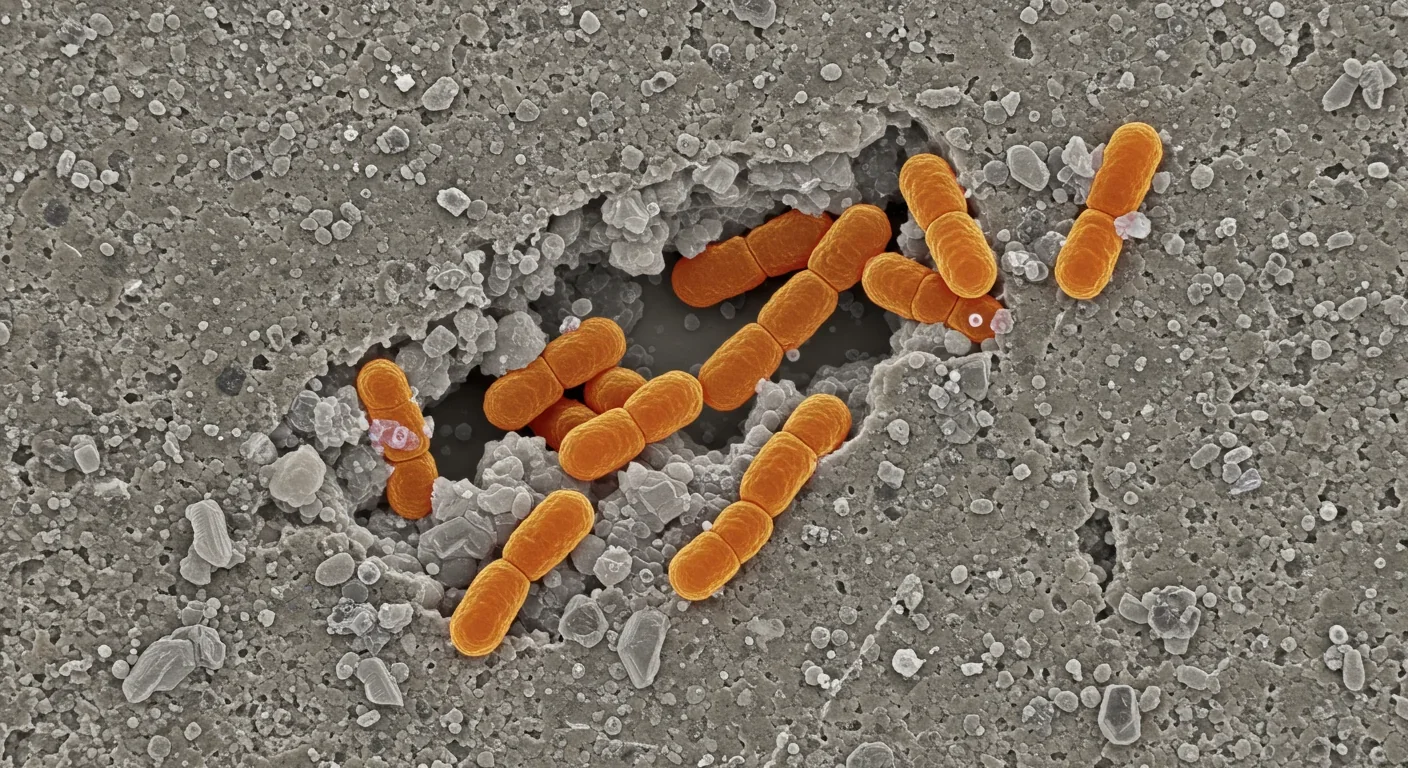
By 2034, the global market for self-healing concrete will reach $1.2 trillion. This staggering projection isn't just financial optimism—it reflects a fundamental reimagining of how we build. What if our infrastructure could repair itself? What if bridges, highways, and buildings contained living organisms that detected damage and fixed it autonomously, without human intervention?
This isn't science fiction. It's happening now, in laboratories and construction sites across Europe, Asia, and North America. Researchers have developed bacterial concrete, a material that embeds living microorganisms capable of producing limestone to seal cracks from within. The implications stretch far beyond construction—this technology represents a convergence of biology and engineering that could reshape our relationship with the built environment.
At the heart of bacterial concrete lies a deceptively simple mechanism. Researchers embed spores of Bacillus bacteria—most commonly Bacillus subtilis or Sporosarcina pasteurii—along with a nutrient source called calcium lactate into concrete during mixing. These bacteria aren't random selections. They've been specifically chosen because they thrive in the harsh alkaline environment inside concrete, where pH levels reach 12 or higher.
The genius lies in their dormancy. Bacillus spores can survive for decades without food or oxygen, encapsulated in biodegradable plastic shells that protect them from the cement matrix. They wait, essentially hibernating, until the moment they're needed.
When a crack forms—whether from thermal stress, structural load, or simple aging—water seeps in. That moisture dissolves the protective capsules and activates the dormant bacteria. Once awakened, they consume the calcium lactate and begin metabolizing it through a process called microbially induced calcite precipitation (MICP). The byproduct? Calcium carbonate, or limestone, which crystallizes and fills the crack, effectively sealing it shut.
"What we've developed is a concrete that's alive. It has bacteria inside which will start to produce limestone the moment water enters, sealing the cracks before they get worse."
— Professor Henk Jonkers, Delft University of Technology
The process typically takes a few weeks for cracks up to 0.8mm wide, though effectiveness varies based on crack size, moisture availability, and temperature. Smaller fissures heal faster, while larger structural cracks present greater challenges.

What began as a microbiologist's experiment has evolved into commercial reality. In 2009, Jonkers published his initial findings. By 2015, the first large-scale deployments began.
The Netherlands, fitting for a nation built on water management, became an early testing ground. Self-healing concrete was deployed in water storage tanks where constant moisture exposure makes traditional concrete vulnerable to cracking. The material performed so well that Dutch highway authorities began testing it on high-traffic roads, where the constant cycle of heavy loads and temperature fluctuations normally creates rapid deterioration.
The M4 Bridge in the United Kingdom provides one of the most compelling case studies. After integrating bacterial concrete, repair costs dropped by 40%, and disruptions to commuters decreased significantly. The bridge had been plagued by recurring cracks that required frequent closures for maintenance—closures that cost money, created traffic nightmares, and increased accident risk.
After implementing bacterial concrete, the M4 Bridge saw repair costs drop 40% while dramatically reducing maintenance disruptions—a tangible demonstration of how living materials can transform infrastructure economics.
South Korea incorporated the technology into high-rise building foundations, where access for repairs is essentially impossible once construction is complete. NASA has even tested self-healing materials for potential lunar construction, where sending repair crews would be prohibitively expensive.
More recently, German engineers at Munich University of Applied Sciences developed an innovative approach: embedding bacteria within fiber reinforcement. "Embedding bacteria in fibres opens up a new path for integrating self-healing capabilities into concrete without changing existing manufacturing processes too drastically," notes Dr. Andreas Meyer, who leads the research. This dual-functionality—structural support plus bacterial delivery—could accelerate adoption by aligning with current production methods.
Here's where enthusiasm meets resistance: bacterial concrete costs significantly more upfront. Early prototypes run up to double the price of conventional concrete, though more recent formulations have brought costs down to 60-70% higher.
For a single building project, that's a substantial premium. For a highway system or a bridge expected to last 50-100 years, the math changes completely.
Traditional concrete structures require regular maintenance—patching cracks, applying sealants, sometimes complete reconstruction. These repairs aren't cheap. A typical bridge undergoes major renovation every 20-30 years, often costing millions and requiring lengthy closures. Some estimates suggest that 30-40% of maintenance costs can be eliminated with self-healing concrete.
The M4 Bridge case study suggests the payback period falls somewhere between 5-10 years for high-traffic infrastructure. For structures in harsh environments—marine applications, freeze-thaw cycles, areas with corrosive groundwater—the economics improve further because damage accumulates faster in those contexts.
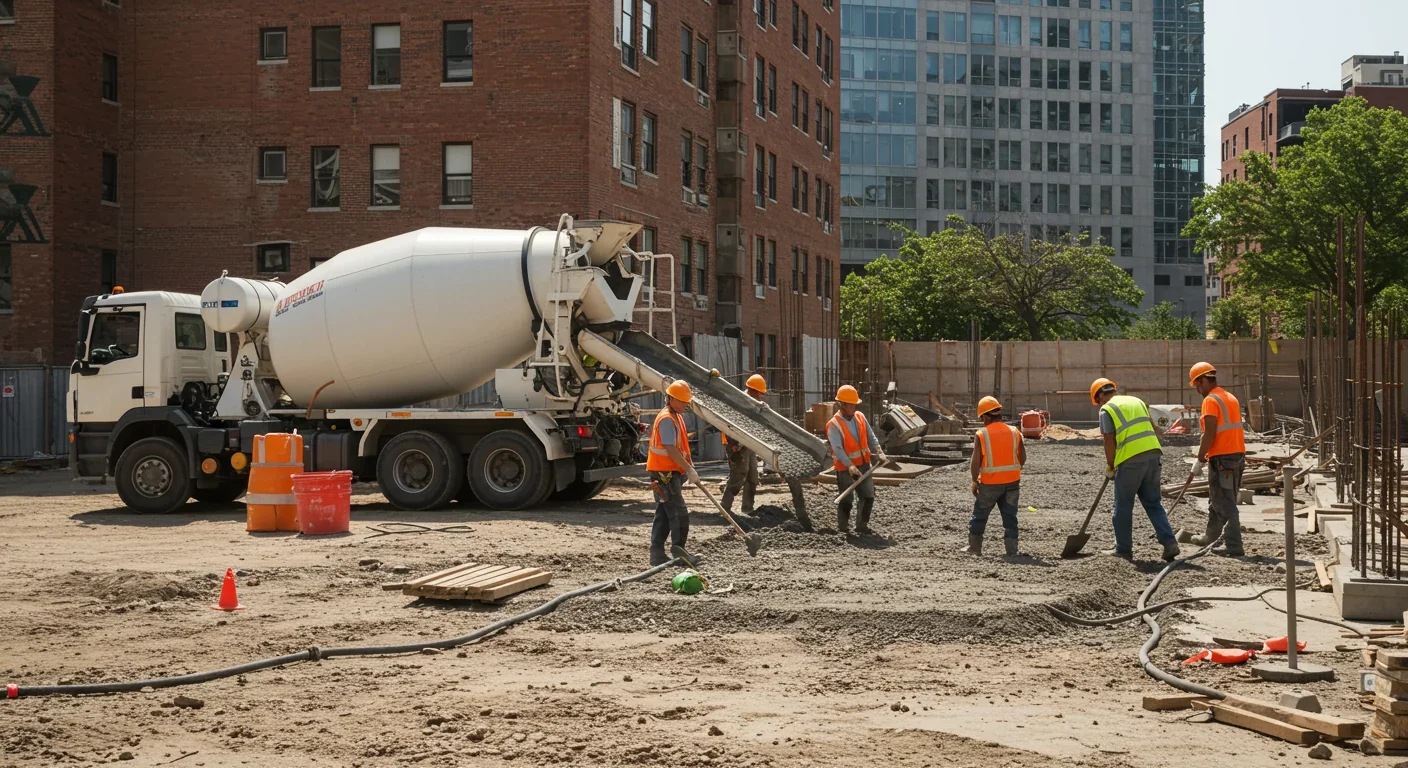
But the true economic advantage isn't just reduced repair costs. It's extended lifespan. Studies indicate bacterial concrete can extend infrastructure life by 30-50% compared to conventional materials. Some researchers claim structures could last up to 30% longer, with maintenance density maintained throughout.
Think about what that means for a city. Bridges that last 75 years instead of 50. Roads that don't develop potholes every spring. Building foundations that remain watertight for a century. The deferred replacement costs compound over decades.
Concrete production accounts for approximately 8% of global CO₂ emissions. That's more than the entire aviation industry. The process of making cement—heating limestone to extreme temperatures—is inherently carbon-intensive, and we use an enormous amount of it. Global infrastructure spending exceeds $3.8 trillion annually, much of it on concrete.
Self-healing concrete attacks this problem from two angles. First, by extending structural lifespans, it reduces the frequency of replacement. If a bridge lasts 75 years instead of 50, that's one less demolition and reconstruction cycle—one less massive cement order, one less fleet of trucks hauling materials.
Second, some formulations incorporate materials that directly reduce cement content. DMAT, a company that recently raised $4.5 million, claims its proprietary bacterial concrete formula cuts CO₂ emissions by up to 60% across the material's lifecycle while doubling infrastructure lifespan.
Widespread adoption of bacterial concrete could reduce global cement demand by up to 30% over several decades—equivalent to removing every car in the United States from the road for an entire year.
Researchers estimate that widespread adoption could reduce cement demand by up to 30% over several decades. That's a meaningful dent in global emissions—roughly equivalent to taking every car in the United States off the road for a year.
There's also the waste reduction angle. Demolished concrete fills landfills. Some gets recycled as aggregate, but most becomes waste. Self-healing concrete keeps structures standing longer, which means less demolition waste and less demand for virgin materials.
Not all bacterial formulations work equally well, and optimizing the living component has proven surprisingly complex. Early experiments tried various bacterial concentrations, and researchers discovered that more isn't always better.
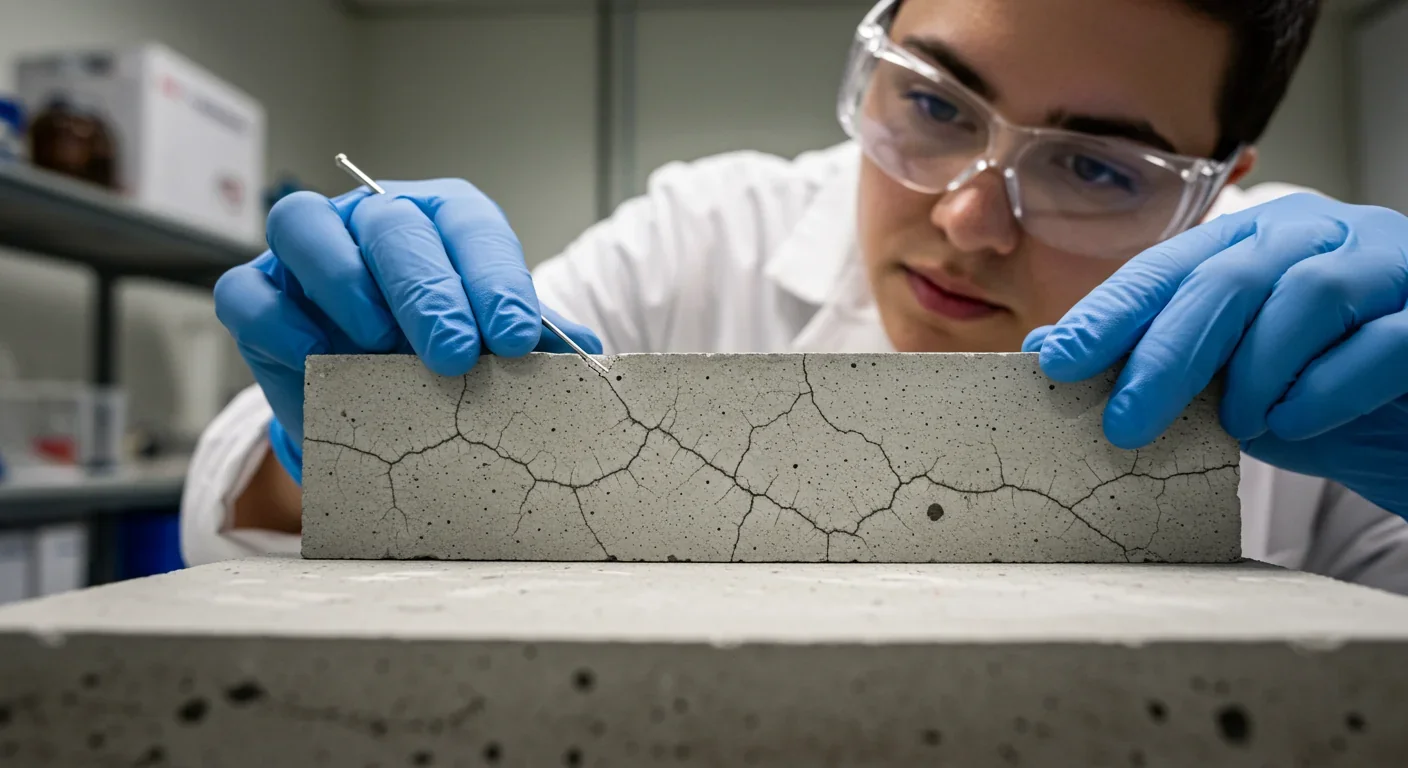
In laboratory tests, concrete containing 10⁵ cells per milliliter showed superior strength compared to mixtures with 10⁶ cells/ml. Why? Because the bacteria compete for nutrients. At higher densities, individual bacteria don't get enough calcium lactate, so they produce less limestone. The result is weaker healing and paradoxically lower overall strength.
The bacterial species matters too. Bacillus subtilis has become the workhorse for most commercial applications because it tolerates extreme alkalinity and produces robust spores that can survive the violent mixing process during concrete production. Sporosarcina pasteurii shows excellent calcite precipitation but can be more finicky about environmental conditions.
Temperature affects performance significantly. Bacterial metabolism slows in cold conditions, meaning self-healing works poorly during winter months in northern climates. Researchers have experimented with thermophilic bacteria strains that remain active at lower temperatures, though these present their own challenges.
Moisture availability is critical. The bacteria need water to activate and to metabolize nutrients. In perpetually dry environments—interior walls in arid climates, for instance—the self-healing mechanism may never trigger. Conversely, in constantly wet conditions like marine applications, bacterial concrete performs exceptionally well, which is why Dutch water tanks were such successful early deployments.
One of the biggest obstacles to widespread adoption isn't technical—it's regulatory. Building codes and engineering standards have evolved over decades based on the predictable behavior of conventional concrete. Self-healing concrete introduces living organisms into the equation, which raises questions that existing codes don't address.
How do you certify that bacteria will remain viable for 50 years? What testing protocols verify healing performance? How do engineers account for self-repair in structural calculations? Should buildings designed with bacterial concrete require different safety factors?
Some progress has been made. Sensicrete, a commercial product, is CE-marked and complies with relevant European design codes. This certification required extensive testing and documentation, a process that took years and considerable expense.
But each jurisdiction has different requirements. A material approved in the Netherlands may need separate approval in the UK, Germany, and France. Expanding to markets outside Europe—particularly the United States, where liability concerns loom large—requires navigating complex regulatory landscapes.
DMAT's recent $4.5 million funding round specifically targets U.S. market entry, with plans to establish domestic production and secure necessary certifications. Paolo Sabatini, the company's CEO, acknowledges that "the trust of world-class investors will enable us to build strategic partnerships across the industry and activate our production in the United States."
"The trust of world-class investors will enable us to build strategic partnerships across the industry and activate our production in the United States."
— Paolo Sabatini, CEO & Co-Founder, DMAT
Industry adoption presents another hurdle. Construction is notoriously conservative, with good reason—failures can be catastrophic. Contractors and developers are hesitant to specify materials that lack decades of field performance data. Insurance companies worry about unknown long-term risks. Procurement processes favor established suppliers and proven materials.
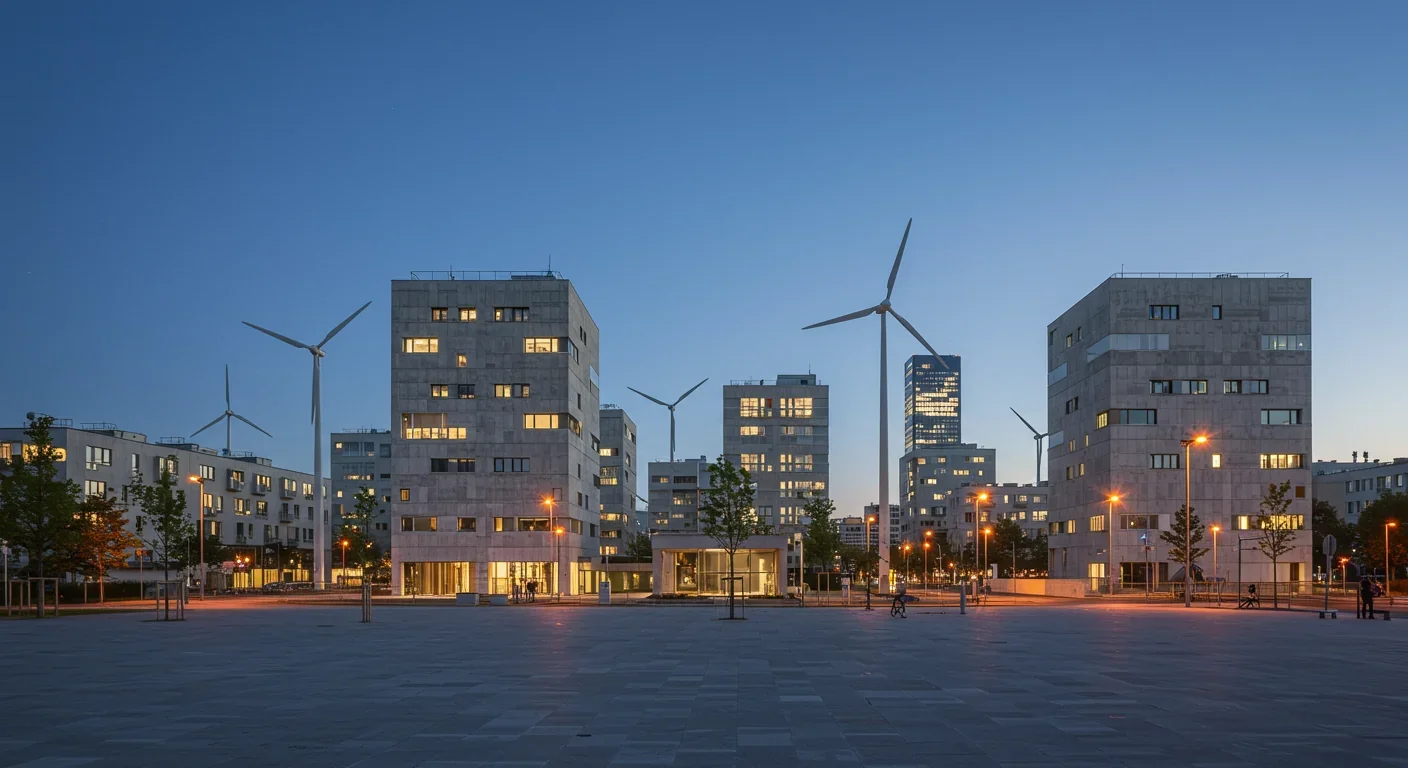
Bacterial concrete isn't a panacea, and understanding its limitations is crucial for appropriate deployment. The technology works best for cracks up to 0.8mm wide. Beyond that width, the bacteria struggle to produce enough limestone to bridge the gap. Large structural cracks still require conventional repair.
Healing takes time—typically several weeks depending on conditions. This is autonomous repair, not instantaneous. For applications where immediate crack closure is critical (nuclear containment structures, certain dams), bacterial concrete may not be suitable.
Environmental conditions constrain performance. Extreme temperatures, very low humidity, or highly acidic conditions can impair or completely prevent bacterial activity. Engineers must carefully evaluate whether site conditions will support the self-healing mechanism.
There's also the question of nutrient depletion. The calcium lactate embedded in the concrete is finite. After multiple healing cycles, the nutrient supply may be exhausted, at which point the self-healing capability ends. Research into renewable nutrient sources—perhaps drawing calcium from the surrounding environment—continues, but current formulations have a limited "battery life" for healing.
Quality control during production presents challenges. Ensuring even distribution of bacterial capsules, maintaining spore viability during mixing and curing, and verifying that the bacteria will activate when needed all require careful process control and testing that goes beyond standard concrete production.
Bacterial concrete represents something larger than just an improved building material—it's part of an emerging field called biomimetic construction, where engineers look to biological systems for inspiration.
Natural bone heals itself. Tree bark regenerates after damage. Skin produces new tissue to close wounds. For millennia, humans built structures that slowly degraded, requiring constant maintenance to stave off collapse. We accepted this as inevitable—the price of building with inert materials.
Bacterial concrete challenges that assumption. Why should buildings be dead? What if we designed structures as living systems, capable of adaptation and self-repair?
Bacterial concrete marks a shift from inert construction materials to living building systems—structures that sense damage, mobilize repair mechanisms, and adapt to changing conditions over decades.
Researchers are exploring fungi-based concrete, where mycelial networks could potentially provide both structural support and healing capabilities. Others investigate shape-memory polymers that "remember" their original form and spontaneously close cracks. Some experiments use bio-engineered bacteria that produce different minerals with specific mechanical properties.
The market clearly sees potential. From $96.36 billion in 2024, the self-healing concrete market is projected to reach $1.2 trillion by 2034—a compound annual growth rate of 31.5%. That explosive growth reflects not just bacterial concrete but an entire ecosystem of self-healing technologies finding commercial viability.
If bacterial concrete becomes mainstream—not just a niche specialty material but a standard option—the implications ripple through construction, urban planning, and environmental policy.
Cities could redesign infrastructure budgets, shifting resources from reactive repairs to proactive investments in longer-lasting materials. The constant cycle of road closures, bridge repairs, and building renovations that plague urban areas could diminish significantly.
Property developers might calculate building lifecycles differently, designing structures intended to last a century rather than the typical 50-75 years. This changes financing models, insurance calculations, and long-term planning.
Environmental impact assessments would need to account for extended material lifespans and reduced replacement cycles. A building that stands for 100 years has a fundamentally different carbon footprint than one rebuilt every 50 years, even if the initial embodied energy is higher.
Maintenance crews could shift from reactive repair to monitoring and verification—checking that self-healing systems are functioning rather than constantly patching damage. This changes workforce training and equipment needs.
Despite the promise, widespread adoption remains years away. Current deployments remain relatively small—individual bridges, specific projects, pilot programs. Scaling to entire highway systems or routine residential construction requires solving multiple challenges simultaneously.
Cost must continue declining. As production scales and competition increases, bacterial concrete should approach price parity with premium conventional concrete formulations. DMAT and other companies are working on more efficient production methods and exploring alternative nutrient sources that cost less than calcium lactate.
Regulatory pathways need clarification. Industry associations are developing standardized testing protocols and performance metrics that can form the basis for building codes. This work is tedious but essential—without clear standards, adoption will remain limited.
Long-term performance data will accumulate as existing projects age. The Dutch water tanks and M4 Bridge are now providing years of real-world evidence. As more structures incorporating bacterial concrete reach 10, 15, and 20 years of service, engineers will gain confidence in the technology's durability and reliability.
Education and awareness within the construction industry are increasing. Architecture programs are incorporating biomimetic materials into curricula. Engineering conferences feature sessions on self-healing concrete. Trade publications regularly cover developments in the field.
Perhaps the most profound shift is conceptual. Bacterial concrete asks us to reconsider the boundary between the biological and the built, between living systems and engineered structures.
For most of human history, that boundary seemed clear. Buildings were made of stone, wood, metal—dead materials we shaped to our purposes. Life was something else, something separate from construction.
But biology offers capabilities that pure engineering cannot match. Self-repair, adaptation, even potential evolution. A building embedded with living organisms isn't purely alive, but it's not purely inert either. It exists in a new category, a hybrid of construction and biology.
This has implications beyond concrete. Researchers are developing living building skins that adjust to temperature and humidity. Bio-fabricated materials that grow into desired shapes. Building systems that process their own waste through bacterial digestion.
The concrete industry has changed remarkably little over the past century. We've improved formulations, added admixtures, refined production methods—but the fundamental approach remained constant. Mix cement, aggregate, and water. Pour it. Let it harden. Wait for it to crack. Repair the cracks. Eventually, demolish and replace.
Bacterial concrete disrupts that cycle. It introduces a fourth phase: repair itself.
This is what technological transformation looks like—not flashy robotics or artificial intelligence, but invisible microorganisms embedded in the foundation, quietly producing limestone in the dark, extending the life of infrastructure by decades while reducing environmental impact.
The buildings of tomorrow may be alive in ways we're only beginning to understand. They'll sense damage, mobilize repair mechanisms, adapt to changing conditions. The bridge you drive across might contain billions of bacteria, working steadily to keep the structure intact. The parking garage could be healing microfractures even as you park your car.
It's a subtle revolution, happening at the microscopic scale, in the alkaline darkness inside concrete. But revolutions don't always announce themselves with fanfare. Sometimes they begin with a spore, waiting patiently for water, ready to build limestone one molecule at a time.

Curiosity rover detects mysterious methane spikes on Mars that vanish within hours, defying atmospheric models. Scientists debate whether the source is hidden microbial life or geological processes, while new research reveals UV-activated dust rapidly destroys the gas.

CMA is a selective cellular cleanup system that targets damaged proteins for degradation. As we age, CMA declines—leading to toxic protein accumulation and neurodegeneration. Scientists are developing therapies to restore CMA function and potentially prevent brain diseases.

Intercropping boosts farm yields by 20-50% by growing multiple crops together, using complementary resource use, nitrogen fixation, and pest suppression to build resilience against climate shocks while reducing costs.

The Baader-Meinhof phenomenon explains why newly learned information suddenly seems everywhere. This frequency illusion results from selective attention and confirmation bias—adaptive evolutionary mechanisms now amplified by social media algorithms.
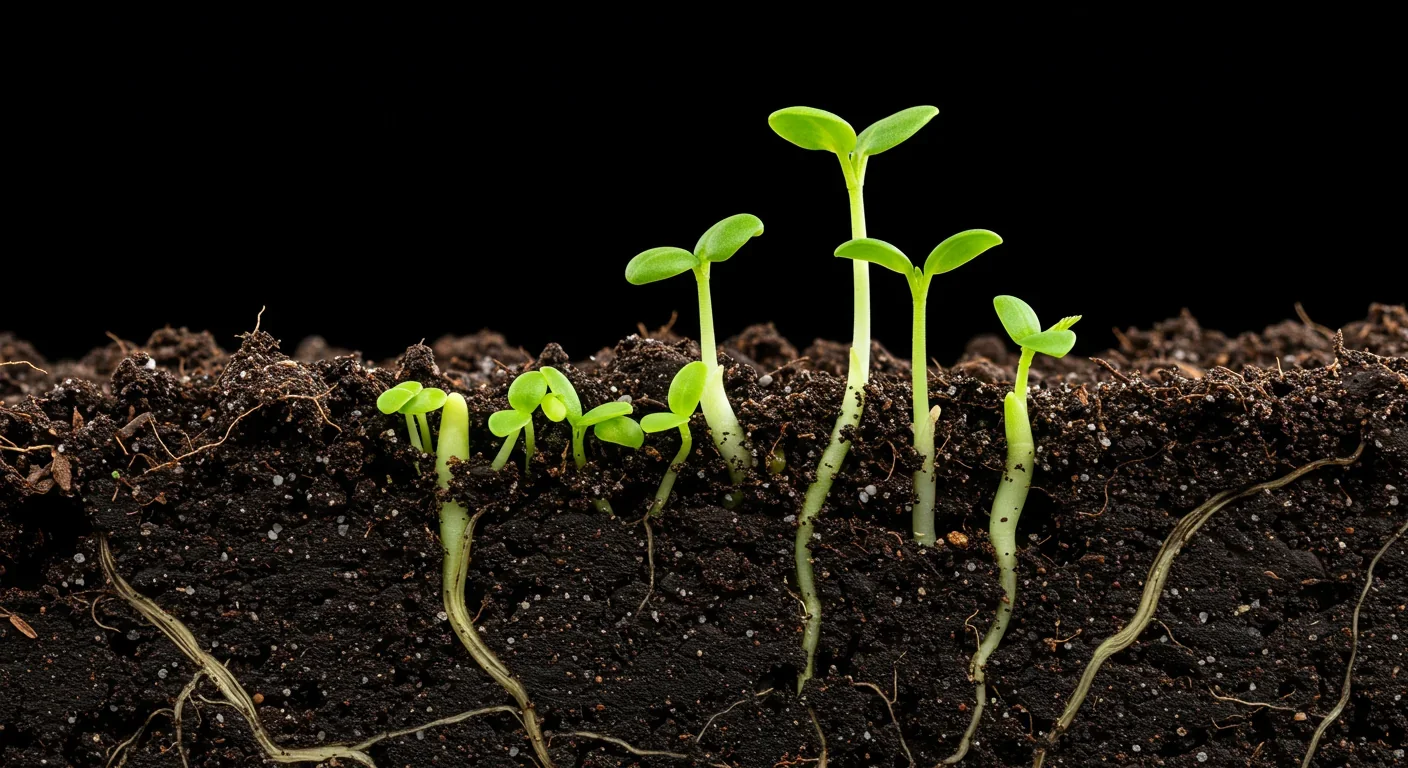
Plants and soil microbes form powerful partnerships that can clean contaminated soil at a fraction of traditional costs. These phytoremediation networks use biological processes to extract, degrade, or stabilize toxic pollutants, offering a sustainable alternative to excavation for brownfields and agricultural land.

Renters pay mortgage-equivalent amounts but build zero wealth, creating a 40x wealth gap with homeowners. Institutional investors have transformed housing into a wealth extraction mechanism where working families transfer $720,000+ over 30 years while property owners accumulate equity and generational wealth.

AlphaGo revolutionized AI by defeating world champion Lee Sedol through reinforcement learning and neural networks. Its successor, AlphaGo Zero, learned purely through self-play, discovering strategies superior to millennia of human knowledge—opening new frontiers in AI applications across healthcare, robotics, and optimization.